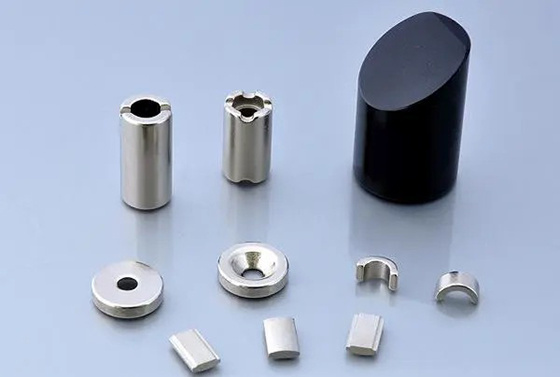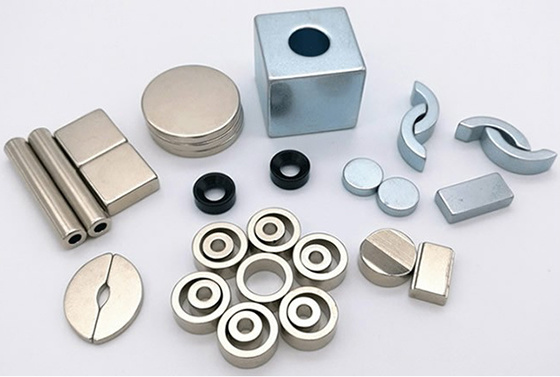What is the difference between bonded NdFeB magnets and sintered NdFeB magnets?
2024-01-16
Neodymium magnet, also known as neodymium iron boron magnet, is a kind of artificial permanent magnet, and it is also a permanent magnet with strong magnetic force so far. NdFeB magnets can attract objects up to 640 times their own weight. If divided by shape, NdFeB magnets can be divided into round magnets, ring magnets, rectangular magnets, square magnets, irregular magnets and so on. According to the production process, NdFeB magnets can be divided into bonded NdFeB magnets and sintered NdFeB magnets.
bonded neodymium iron boron magnet
In fact, these two kinds of magnets belong to NdFeB, and these two kinds of magnets are distinguished according to the production process. Bonded NdFeB is actually made by injection molding, while sintered NdFeB magnets are made by pumping out and heating at high temperatures. Bonded NdFeB magnets are injection molded, so they contain adhesives, and the density is generally only 80% of the theoretical amount. Sintered NdFeB magnets undergo a complex high-temperature heating process, so in terms of magnetism, the attenuation of sintered NdFeB relative to sintered NdFeB is about 30%.
Sintered NdFeB magnets are produced by powder sintering of anisotropic magnets. Generally, only blanks can be produced through sintering, and then become magnets of various shapes through mechanical processing (such as wire cutting, slicing, grinding, etc.). Sintered NdFeB is a hard and brittle material, which is difficult to process. The process loss is large, the cost is high, the dimensional accuracy is poor, the corrosion resistance is poor, and the surface needs electroplating treatment. But the advantage is high performance, has done more than 50M.
Bonded neodymium iron boron magnet, composed of Nd2Fe14B, is a synthetic magnet. Bonded NdFeB magnets are magnets made of rapidly quenched NdFeB magnetic powder and binder through "compression molding" or "injection molding. Bonded NdFeB magnets have high dimensional accuracy and can be made into magnetic elements with complex shapes, with the characteristics of one-time molding and multi-pole orientation. The bonded NdFeB magnet has high mechanical strength and can be formed at the same time as other supports.
Bonded NdFeB has the advantages of low cost, high dimensional accuracy, large shape freedom, good mechanical strength, and light specific gravity. It is widely used in office automation equipment, electrical machinery, audio-visual equipment, instrumentation, small motors, metering instruments, etc. Field. Machinery, mobile phones, CD-ROM, DVD-ROM drive motor, hard disk spindle motor HDD, other micro special DC motor and automation instruments and other fields.
Compared with sintered NdFeB magnets, bonded NdFeB magnets can be formed once without secondary processing, and can be made into complex magnets of various shapes, which is also incomparable to sintered magnets. With the help of bonded NdFeB magnets, one can greatly reduce the size and weight of the motor.
sintered neodymium iron boron magnet
Sintered NdFeB magnets are made by powder metallurgy. First, the melted alloy needs to be pulverized and pressed into a compact in a magnetic field, and then the compact is sintered in an inert gas or vacuum to achieve densification. In general, only magnet blanks can be produced after sintering, and then magnets of various shapes can be made by mechanical processing (such as wire cutting, slicing, grinding, etc.). Sintered NdFeB permanent magnets are widely used in electronics, motors, medical equipment, toys, packaging, hardware machinery, aerospace and other fields. The more common ones are permanent magnet motors, speakers, magnetic separators, computer disk drives, magnetic resonance imaging equipment and instruments.
Compared with bonded NdFeB magnets, sintered NdFeB magnets have high processing costs, large losses during processing, and poor dimensional accuracy. But its advantages are also obvious. At present, the (BH)max of sintered NdFeB magnets can reach more than 50M, while bonded magnets are generally below 10M.





